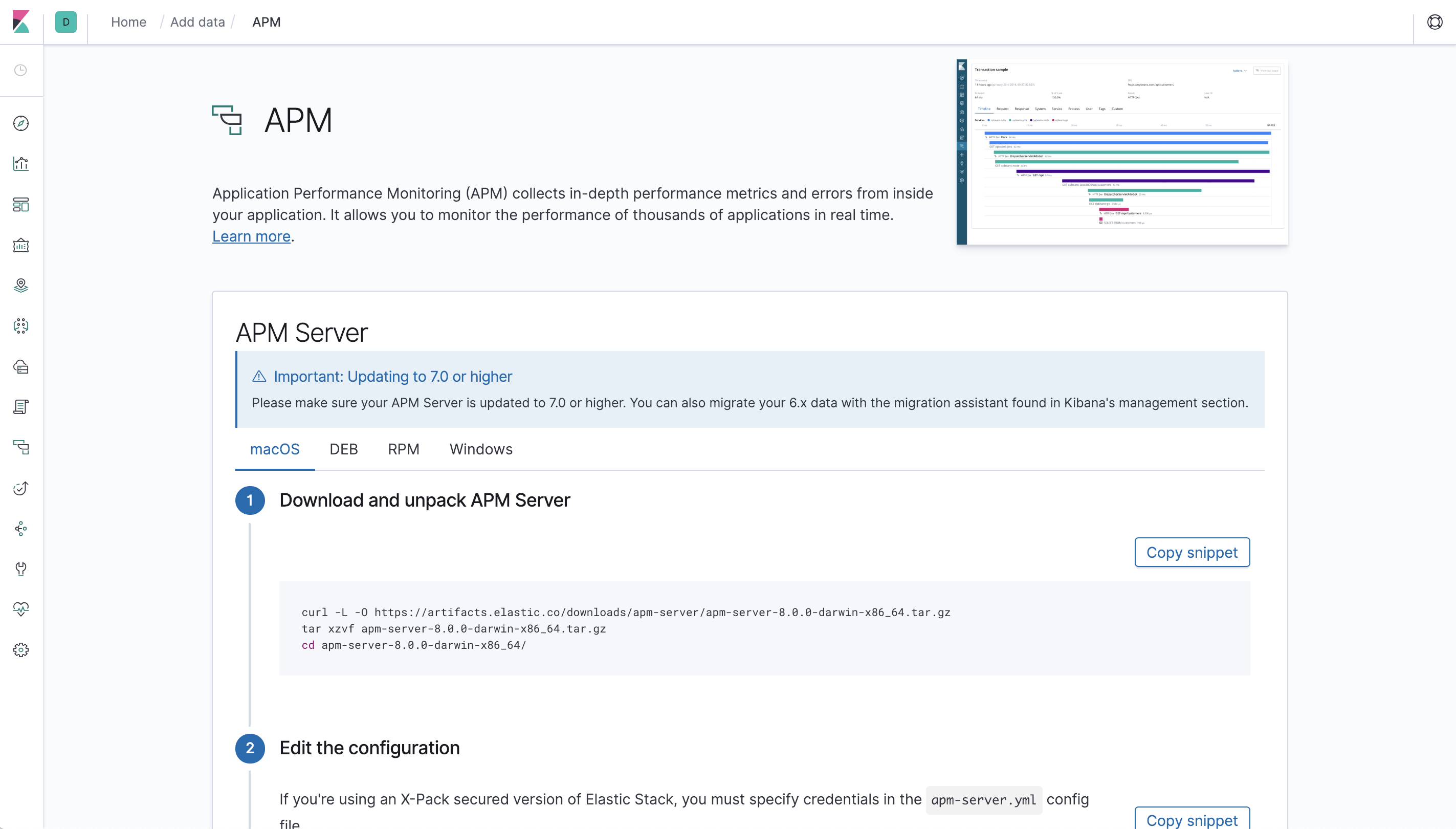IMPORTANT: No additional bug fixes or documentation updates
will be released for this version. For the latest information, see the
current release documentation.
Getting Started
edit
IMPORTANT: This documentation is no longer updated. Refer to Elastic's version policy and the latest documentation.
Getting Started
editIf you have not already installed and configured Elastic APM, the Setup Instructions will get you started.

Index patterns tell Kibana which Elasticsearch indices you want to explore. An APM index pattern is necessary for certain features in the APM UI, like the query bar. To set up the correct index pattern, simply click Load Kibana objects at the bottom of the Setup Instructions.
After you install an Elastic APM agent library in your application, the application automatically appears in the APM UI in Kibana. No further configuration is required.
